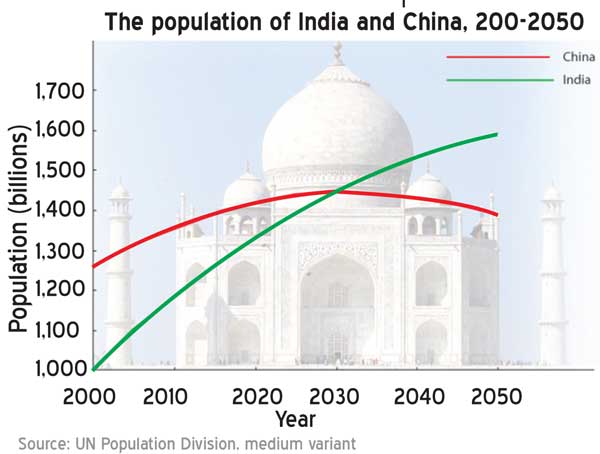Reply To:
Name - Reply Comment
Last Updated : 2024-04-26 02:12:00

“‘One belt, one road’, China’s blueprint to tie together Asia and Europe into one vast trading network, could reshape geopolitics and the world economy– The Economist (UK), June 30, 2016”
Standard Chartered said few years back that the US will eventually be replaced in what it defines as the third global economic super cycle. Standard Chartered is not the only one to make the claim of China gross domestic product (GDP) growth beating the US within the next five to six years.
The International Monetary Fund (IMF) has made similar assessments over the last year. It forecasts China GDP to hit US $ 24.6 trillion in 2020, up from US $ 5.7 trillion 2010. Meanwhile, the US economy should register GDP growth of US $ 23.3 trillion, up from US $ 14.6 trillion in 2010, according to Standard Chartered economists.
According to Dr. Dayan Jayatilleka, economically it makes perfect sense for Sri Lanka to piggyback on Chinese surpluses as well as its global projects and institutional initiatives. Quote; “The model of China as the enormous motor, which powered the much smaller motor of the Sri Lankan economy was eminently rational, but in its ideological irrationality the United National Party (UNP) initially delinked abruptly from China.”

One of the criticisms against the previous administration was the then government resorting to heavy borrowings, especially from China. Contrary to popular belief, the Central Bank annual report 2015 presented this April revealed that the total government debt as a percentage of GDP was only 71 percent as at December 2014 against 97 percent of the GDP in the year 2000 and under this government, it was increased to 76 percent by end-2015. Similarly, the government budget deficit as a percent of GDP, which was 9.5 percent in 2000, has come down to 5.7 percent in 2014, but unfortunately, it has increased to 7.4 percent by end-2015.
Economic policy incongruences of the national government
In presenting the Budget 2016, Finance Minister Ravi Karunanayake said last November, “We have a dream to be a developed nation. We will ensure delivery of targets and goals set focusing on short, medium and long-term strategies to facilitate transition towards an upper middle-income economy. The medium-term strategies proposed consist of (a) Enhancing income levels, (b) Development of rural economies, c) Generating one million employment opportunities.” To me these are not strategies but a few items in the government’s ‘wish list’. In the wish list we find among others; a proposal for signing free trade agreements with Japan, the USA, South Korea, allocating Rs.1.5 million for each Grama Niladhari division (14,022 such villages) for rural economic development, and allocating some Rs.60 billion to upgrade 5,800 primary and secondary schools and many more. However, the deliverables are yet to be seen.
Last week in an interview with the Channel NewsAsia, Prime Minister Ranil Wickremesinghe said the government needs some more loans from countries like China, Japan and India.
As per the budget speech, the government is committed to follow more market-oriented policies. The budget deficit of Rs.740 billion will be entirely financed through borrowings. One can argue that the government budget presented by Ravi Karunanayake reflects mainly the neo-liberal policies of the UNP and not necessarily the policy of the Sri Lanka Freedom Party (SLFP), the other party in the national government. In the past, the SLFP-led governments used to give much prominence to uplift the agriculture economy, which is totally neglected in this budget.
China as a superpower and India’s emerging economic model
The recent regression in Western economies and the rapid economic growth in emerging economies are shifting the global industrial centre of gravity away from the north Atlantic and raising the importance of Asian economies in world production and trade. Who will eventually emerge as the top economic power by the year 2030? Will today’s five largest economies—China, the US, India, Japan and Germany—maintain their places between now and 2030?
According to the IMF, using public-private partnership (PPP), China has already surpassed the US in terms of economic power. China has the world’s largest highway system, most high-speed trains and is the largest exporter in the world. Also in terms of actual wealth, Chinese citizens save over 50 percent of their income compared to the US whose citizens save about 4 percent.
The standard of living is growing in China and it will soon become a developed nation. The peasants of China’s lives are getting better every year due to the increase wealth of China but the peasants of the US are unfortunately getting poorer and poorer as income inequality increases. By other measures, such as current dollar GDP, the US is still the largest economy, and it is likely that the US economic dominance will continue.
Many reliable and responsible futuristic projections set real GDP growth rates for China and India at about 8 and 7 percent per year, respectively, between 2007 and 2030.
In India, a new economic model is emerging from Prime Minister Modi’s speeches and policy statements. The model includes export-oriented manufacturing, heavy infrastructure building and urbanization. This suggests a shift from India’s current services-driven growth trajectory to an East Asian growth model based on the mass deployment of labour and capital. According to experts, the new strategy will require keeping the rupee weak and dramatically expanding the financial system. International experience shows that the model can generate growth and jobs but sustaining such rapid financial expansion is not without risks.
Indian Ocean strategy and China’s 21st Century Maritime Silk Road
During the 2006-2009 war, India wanted the Liberation Tigers of Tamil Eelam (LTTE) defeated despite objections from Tamil Nadu political leadership. Since then, the Indo-Sri Lanka bilateral relationships were seen going through a bad patch. As articulated by Bandu De Silva, an eminent career diplomat, under the ‘Panikkar Doctrine’, Sri Lanka was conceived as essential for India’s forward defence system in the direction of Indian Ocean. It was clear that Mahinda Rajapaksa administration has failed to dispel India’s concerns about growing tie up between Sri Lanka and China and how it impacts India’s national security. However, this situation has dramatically changed since the present government came into power.
In 2013, the US and India signed two landmark agreements -- their first commercial nuclear deal and an accord between the two governments to enhance defence cooperation. The Indian government intends to use US nuclear technology at commercial power sites it is developing in Gujarat and Andhra Pradesh using US nuclear technology.
World Association of Political Economy Chairman Professor Cheng Enfu in a symposium held recently in Sri Lanka said that with the Indian Ocean being the lifeline of China’s foreign trade, energy and raw material transportation, Sri Lanka will undoubtedly play a crucial role in the strategy of the 21st Century Maritime Silk Road with its unique geographic advantage. However, the critical issue here is the ‘Indian interests’. The Indian foreign policy is based on a fundamental principle of “In diplomacy, there were no permanent friendships, but permanent interests.” Sri Lanka is compelled to make use of this principle governing Indian foreign policy to further strengthen bilateral relationship with India. It is in that context the vital issue of keeping the Indian government informed on the details of the present strategic alliance and the growing tie up between China and Sri Lanka should be viewed.
Sri Lanka needs to emphasize the importance of forming a strategic alliance with China and come to some kind of a tripartite agreement to safeguard the Indian Ocean forward defence line and promoting ‘Maritime Silk Route’ strategy for greater economic benefits for the three nations. Already India and Sri Lanka have a free trade agreement (FTA). The proposed FTA between China and Sri Lanka will allow Chinese Companies to set up large-scale industries in Sri Lanka so that they could make use of the Indian FTA to accelerate trade with India and at the same time re-export products back to China.
Here we are talking about tapping 2.5 billion target market customers in both countries. Sri Lanka will stand to gain more. During the former President Mahinda Rajapaksa’s visit to China in 2013, both countries agreed to a strategic cooperative partnership and in September 2014, Chinese President Xi Jinping visited Sri Lanka and announced the FTA negotiations. It seems that the present president and prime minister both have now realised the importance of this three-pronged approach and are so keen to finalise the proposed FTA with China and develop the Port City in Colombo and allow more concessions to Chinese companies whilst promoting trade and investments with India through ECTA.
Economy caught between the devil and the deep blue sea
As argued in my previous article ‘Ultimate goal of Geneva resolution’ published in a daily newspaper on March 17, 2015, the real motive behind the move by the US at the UNHRC is not to promote reconciliation, human rights and accountability in Sri Lanka. The US, UK and the West are now concerned that China would emerge as the superpower status economically thus dominating the Indian Ocean region economically as well as a militarily powerbase later. The ultimate goal of the US is to regain full control and dominance over the ‘Indian Ocean region’. In order to achieve that they need to ensure that the emerging Asian countries like India, Sri Lanka and China would not get together and form a ‘regional strategic alliance’. This can only be done through creating division among those countries. The first strategic move by the US was the signing of the above accord with India to enhance defence cooperation. The second ploy was to make use of the alleged human rights violations and other ‘good governance issues’ to deliberately interfere with the internal affairs of the Government Sri Lanka and annoy the leaders. The motive is to destabilize Sri Lanka through the mechanisms available under the UNHRC. It seems that the present government is trapped between the Geneva resolutions and geo-economic considerations and internal conflicts of China and India.
In a recent newspaper cartoon, an English teacher is asking her students in the class, “One day Sri Lanka will become a highly developed country. Which tense is this?” A student answered, “Future impossible tense.”
(Jayampathy Molligoda is a Fellow member of the Institute of Chartered Accountants of Sri Lanka and holds a Master of Business Administration (MBA) from the University of Sri Jayewardenepura. He is currently Director/CEO of a leading Regional Plantation Company in Sri Lanka and can be contacted through jayampathy@bpl.lk)

Add comment
Comments will be edited (grammar, spelling and slang) and authorized at the discretion of Daily Mirror online. The website also has the right not to publish selected comments.
Reply To:
Name - Reply Comment
US authorities are currently reviewing the manifest of every cargo aboard MV
On March 26, a couple arriving from Thailand was arrested with 88 live animal
According to villagers from Naula-Moragolla out of 105 families 80 can afford
Is the situation in Sri Lanka so grim that locals harbour hope that they coul